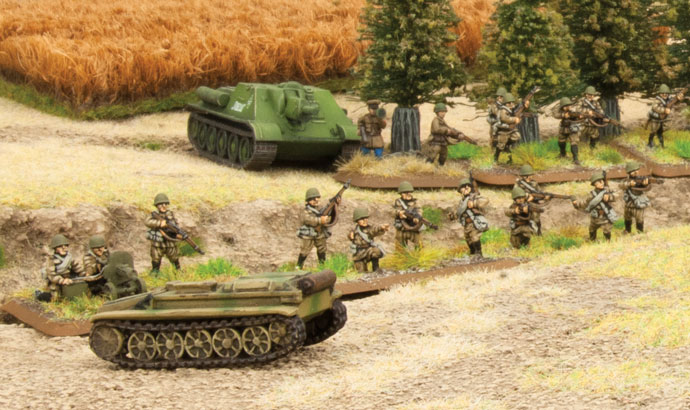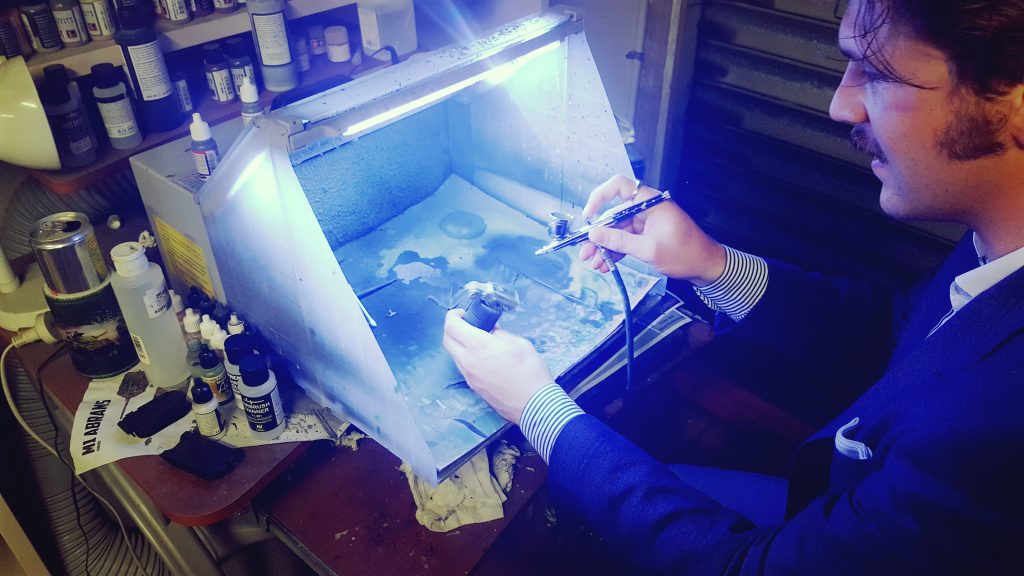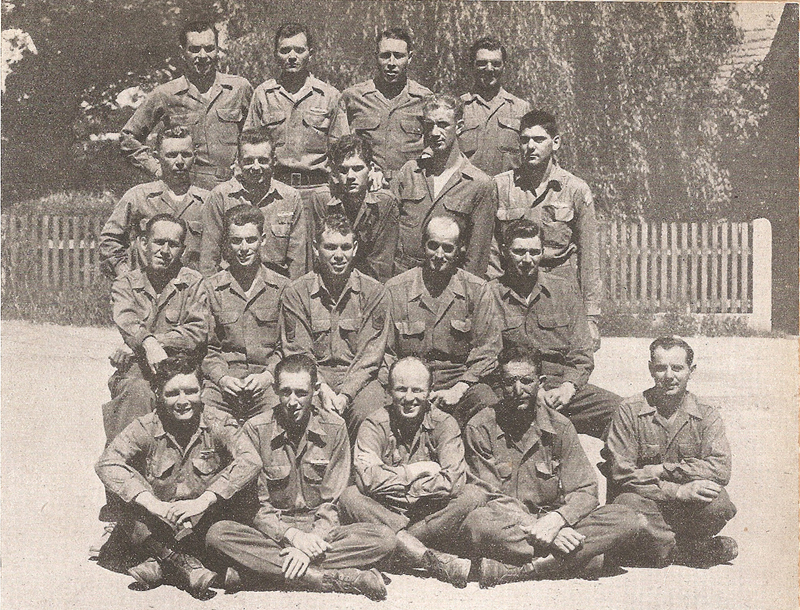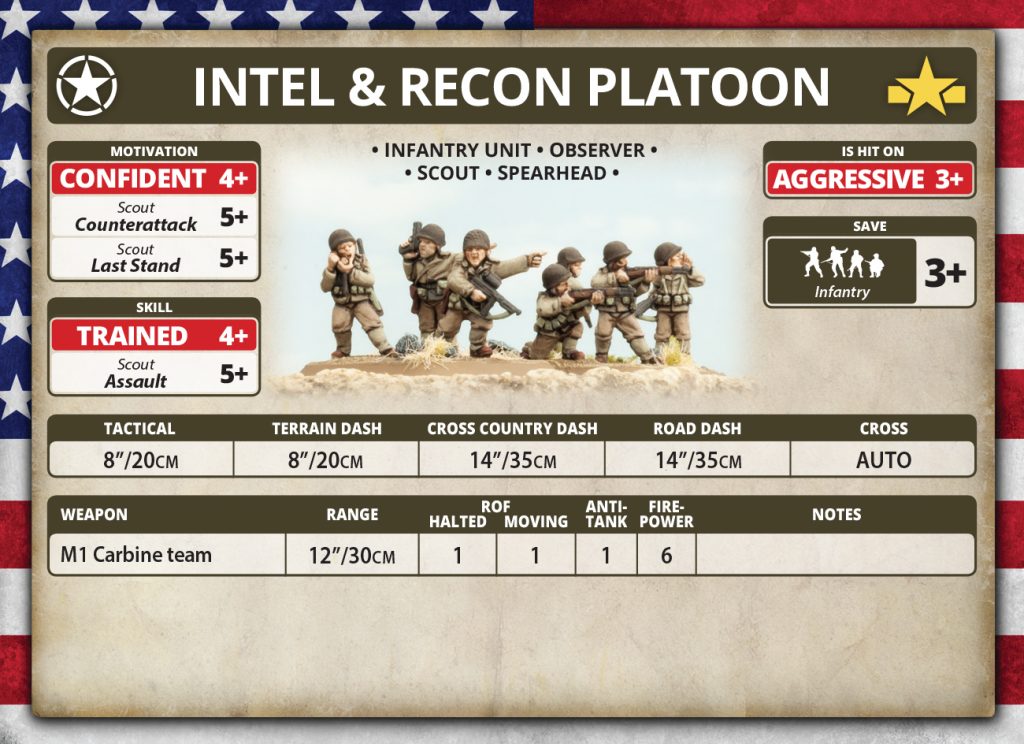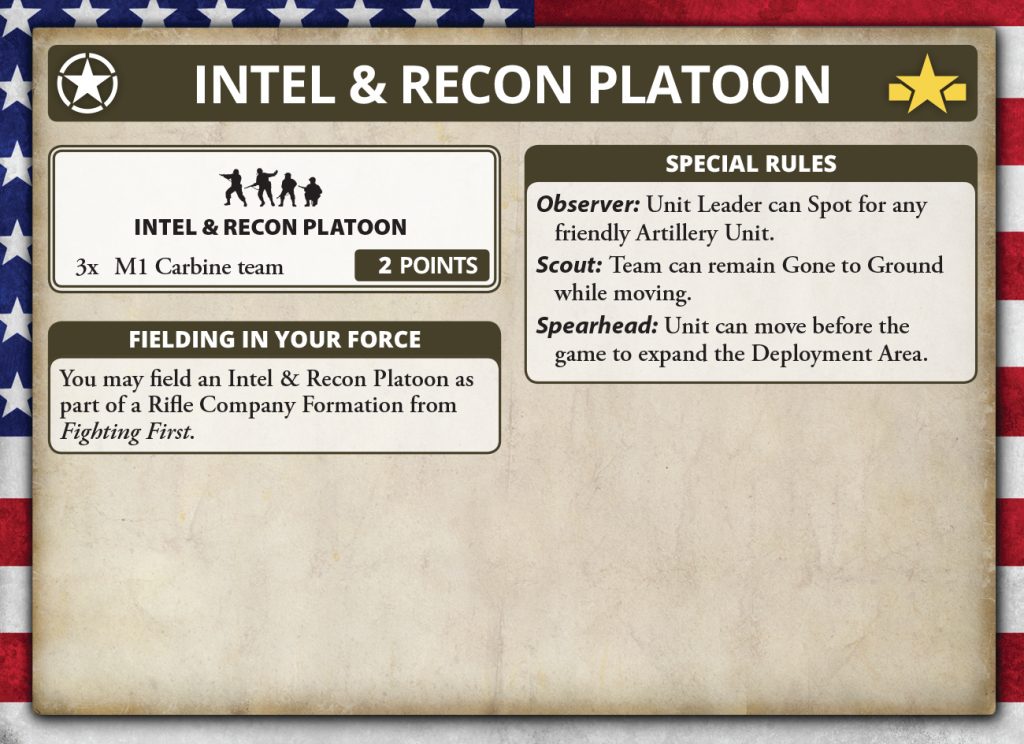with Wayne Turner

Background
Oil War details the spread of World War III to the middle-east as the combatant nations scramble to secure precious oil supplies. Inside you will find background for the Israelis, Iraqis and Iranians in the lead up to World War III, as well as details of their conflicts immediately beforehand.
Forces
Oil War contains Forces, Formations and Units for fielding Israeli, Iraqi, and Iranian forces. In addition there is also a section on how to field Syrians using the Iraqis and an additional formation and unit for the Soviets.
Israel
The first Force you will find in Oil War are the Israelis. The Israel Defence Force (IDF) had learnt a lot from the Arab-Israeli conflicts of 1967 and 1973 and had undertaken a number of reforms and equipment upgrades to be ready for any future conflict. In 1982 they had also invaded Lebanon in an attempt to clear hostile Palestinian forces from their northern border and a number of lessons were learned from the experience. 1982 also saw the first combat of the Israel’s new main battle tank, the Merkava. A direct result of this was the improved Merkava 2.
You can field four different formations in an Israeli force: Merkava 1 Tank Company, Merkava 2 Tank Company, Magach 6 Tank Company, and M113 Mech Infantry Company.
Israelis are well trained and motivated with Courage 3+, Morale 3+, Skill 3+, Assault 4+, Counterattack 3+.
An Israeli Tank Company has 2-3 Tank Platoons, a M113 Mech Infantry Platoon, and either a Jeep Recce Platoon or a M113 Recce Platoon. These can either have Merkava 1, Merkava 2, or Magach 6.
The Merkava 1 and Merkava 2 come in a new plastic kit that will let you build either model. The Merkava 1 is a formidable tank armed with the same M68 (British L7) 105mm gun as many NATO tanks. This gives it a Range 40”/100cm, ROF 2/2, AT 19 and FP 2+. Due to a good supply of HE it has the Brutal rule (re-roll infantry and unarmoured saves). The gun is also fitted with a Stabliser (can move Tactical 14”/35cm, but +1 To Hit), a Laser Rangefinder (no To Hit penalty for over 16”/40cm), and Smoke. It has Front Armour 18, Side 6, and Top 2. The Merkava 2 is upgraded with additional armour giving it Front Armour 19, Side 7, and Top 2. Well-protected ammunition stowage gives the Merkava 1 and 2 a Remount 2+
Due to their experiences in the previous three wars the Israelis ensured their tanks were well equipped with machine-guns. Each Merkava 1 or 2 has a co-axial 7.62mm MG, commander’s and loader’s 7.62mm AA MGs, and a remote-controlled .50 cal MG mounted over the main gun.
The Magach 6 is the Israeli variant of the US M60A1. It’s a tough tank with Front Armour 15, Side 8 and Top 2. It also mounts the M68 105mm gun and has the same machine-gun arrangement as the Merkavas, giving it plenty of firepower.
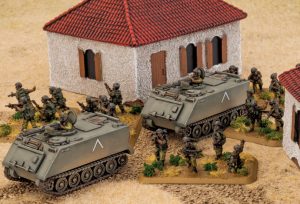
Israel’s various infantry formations, from the named brigades to the paratroopers, were all trained to fight from the American M113 APC. An M113 Mech Infantry Company comes with 2 or 3 M113 Mech Infantry Platoons, a Tank Platoon (of any type), an M125 81mm Mortar Platoon and an M150 Anti-tank Section.
Israeli M113 Mech Platoons are well-equipped and capable units. A full-strength platoon comes with 4x Galil assault rifle teams, 3x FN MAG teams, each of these is also armed with M72 LAW for anti-tank self-defence. In addition they have 3x RPG-7 anti-tank teams, a M47 Dragon guided anti-tank missile team and a 52mm mortar team. These are transported in 4x M113 APCs.
Company weapons include a M125 81mm Mortar Platoon with 2 or 3 M125s, and a M150 anti-tank Platoon with 2 M150 TOW armed APCs.
The Israelis also have a good selection of support with M106 120mm SP mortars, M109 SP Artillery, Jeeps mounting TOW anti-tank missiles, and the super-secret Pereh SP anti-tank missile launcher. They are well-covered by anti-aircraft with M163 VADS, ZSU-23-4 Shilka, Redeye SAM, and M48 Chaparral SAM missiles. Their aircraft includes Skyhawk Fighter Flights and AH-1 Viper (Cobra) attack helicopters.
In 1985 the Pereh was an ultra-secret weapon, it has only been revealed to the wider world recently. The Pereh is a M48 (Magach 5) tank mounting a turret with twelve Tamuz NLOS (Non-line of sight) guided anti-tank missiles. The Pereh had a dummy gun so it would look like a tank from a distance. Its NLOS missile could be guided by the gunner through a camera mounted in the missile, allowing it to be fired from an out of sight position.
Another major change to the IDF after the 1973 war was the introduction of the attack helicopter. The Israelis got their first American Cobra attack helicopters in 1975 and were used extensively in Lebanon. The Israelis named them ‘Tzefa’, Viper in English. Like the US versions, the Vipers are armed with Improved TOW missiles, M197 Gatling guns and M159 rocket launchers.
Iraq
Today we think of Saddam Hussein as the bad guy, but in 1985 things were not so clear cut. In the west, especially in America, Iran was seen as the greater of two evils. France had entered into several arms deals to supply the Iraqis, and Iraq’s oil was still desired globally. The Iraqi army had been fighting Iran since 22 September 1980 and by 1985 fielded a mix of Soviet, Chinese, French, and Brazilian equipment and vehicles organised loosely along Soviet lines.
An Iraqi Force can field five different formations, three tank and two mechanised infantry. The Iraqis have Courage 4+, Morale 4+, Skill 5+, Assault 5+ and Counterattack 4+.
The Iraqis used the Soviet T-72M tanks in the 10th Armoured Brigade. The Iraqis used the export version of the T-72, the T-72M, which had Front Armour 15, Side 8 and Top 2. Its powerful gun has a Range 32”/80cm, ROF 1/1, AT 21 and FP 2+. This is further enhanced by being Brutal, having a Laser Rangefinder, and a Stabliser.
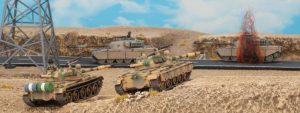
The Iraqis also used Soviet T-55, Chinese Type 59 and Type 69 tanks. The Type 59 and 69 were Chinese developments of the Soviet T-54 and were similar in capabilities to the T-55. The T-55 is a dependable and reliable tank, and against the Iranians it proved more than adequate, especially supporting their infantry. It has the same armour as the T-62, but is armed with the 100mm D-10T gun (Range 32”/80cm, ROF 1/1, AT 16, FP 2+, Slow Firing).
The T-72M, T-62 and T-55 all have a co-axial MG and a 12.7mm AA MG.
An Iraqi Tank Battalion has 2 or 3 Tank Companies, either a BMP-1 or BTR Mech Company, and a ZSU-23-4 Shilka or ZSU-57-2 AA Company.
The Iraqis also acquired a large number of BMP-1 infantry fighting vehicles from the Soviet Union and many of the better equipped mechanised infantry battalions were mounted in these. An Iraqi BMP-1 Mech Battalion is built around 2 or 3 BMP-1 Mech Companies, a T-62, T-72, or T-55 Tank Company, a ZSU-23-4 or ZSU-57-2 AA Company and a 2S1 Carnation SP Howitzer Battery. The Iraqis received extensive training from the Soviets in the 1970s and still use Soviet style combined armed doctrine in 1985, so each Mech Battalion formation is a combined arms unit with infantry, tanks, anti-aircraft and artillery.
The infantry are armed with Soviet or Chinese AK-47 assault rifles, RPG-7 anti-tank rockets, and PKM machine-guns. Companies can be reinforced with SA-7 Grail man-portable surface to air missiles for air defence. A BMP-Mech Company can vary in size from a large unit of ten AK-47 assault rifle, nine RPG-7 anti-tank, and two PKM LMG teams mounted in 12 BMP-1s to a small company of four AK-47 assault rifle and three RPG-7 anti-tank teams mounted in four BMP-1s.
The rest of the mechanised infantry are mounted in a variety of wheeled armoured personnel carriers such as the Soviet supplied BTR-60 or the Czech OT-64. Some units were even mounted in the French AMP-10P tracked infantry fighting vehicle.
Much of the battalion’s equipment are the familiar Soviet types, such as the ZSU-23-4 Shilka anti-aircraft vehicle and 2S1 Carnation SP howitzer. The BTR Mech Battalions, because they didn’t have the anti-tank missile of the BMP-1, were also issued with the Spandrel anti-tank vehicle armed with the powerful AT-5 Spandrel guided missile (Range 8”/20cm – 48”/120cm, ROF 1/-, AT 21, FP 3+).
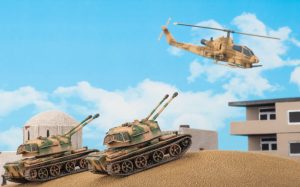
The Iraqis made arms deals with a variety of nations giving them an unusual mix of supporting weapons. They used Soviet BRDM-2 scout cars for reconnaissance duties, though a number of similar designs from France, Brazil, and Hungary were also used.
Unique to the Iraqis was the VCR/TH HOT anti-tank missile vehicle. This was a French light wheeled APC mounting a pair of guided anti-tank missile launchers. It fired the devastating HOT missile (Range 8”/20cm – 48”/120cm, ROF 1/-, AT 23, FP 3+).
Artillery came from the Soviets and French. The Iraqis used both the 2S1 Carnation 122mm self-propelled howitzer and the 2S3 Acacia 152mm self-propelled howitzer. Alongside these fought the French AMX AUF1 self-propelled howitzer with its automatically loading 155mm weapon (reduces the score required to hit by 1 during bombardments). The Iraqis also used a lot of rockets, the most common being the Soviet BM-21 Hail or similar Chinese copies.
Iraqi Self-propelled anti-aircraft missile assets came from both the Soviets and French with the SA-9 Gaskin, SA-13 Gopher, SA-8 Gecko, and AMX Roland SAM systems all seeing service in the war against Iran.
Iraqi helicopters played a major role in their conflict with Iran, with Soviet built Hinds and French supplied Gazelles working in close coordination. The Hinds would supress a targeted area, making sure anti-aircraft units had been forced to ground with rocket and Gatling gun fire, before the Gazelles would rise up from concealed positions to take out enemy tanks with their HOT ATGMs.
Syrians
In Oil War you can also field Syrians. We haven’t made a specific force for them, but much of their organisation, doctrine and weapons systems are similar to the Iraqis. For this we have added a section to Oil War with a guide to how to field Syrians using the Iraqi forces. Like the Iraqis the Syrians are heavily influenced by the Soviets, but unlike the Iraqis, buy 1985 they are still on good terms with them. They also have a good relationship with the Iranians. This means they are on the opposite side to the Iraqis. Pitting these two evenly matched forces against each other will make for some interesting games.
Iranians
The Iranian military was a very western influenced institution before the 1979 Islamic Revolution, and much of this in the form of organisation, doctrine, and equipment has remained in place under the rule of the Islamic Republic, though the most western leaning and thinking officers were purged from it ranks. The regular Islamic Republic of Iran Army (IRIA) used a mix of American and British tanks and vehicles, while the small arms were West German G3 battle rifles and MG3 machine-guns. Iran’s other fighting force was the Islamic Revolutionary Guards Corps (IRGC) and, as a newly raised organisation, used a mix of former army equipment, captured Iraqi arms, and newly purchased weapons from China, Soviet Union, North Korea, Libya and Syria.
Iranians are rated Courage 3+, Morale 3+, Rally 3+, Skill 5+, Assault 5+ and Counterattack 3+.
The tank formations of the IRIA used the British Chieftain and the US M60. Both the Chieftain Tank Company and the M60 Patton Tank Company are quite simple formations with two or three Tank Groups (each with three tanks) and a Mechanised Group (infantry mounted in M113). The IRGC also field tank formation using captured and purchased Iraqi/Soviet T-62 and T-55 tanks. These contained two T-62 Tank Groups, an optional T-62 or T-55 Tank Group and an optional Mechanised Group or Basij Infantry Company (volunteer militia).
The Mechanised Company, which can represent the IRIA or IRGC, is based on a core of two or three Mechanised Groups, a M113 106mm Anti-tank Group or M150 (TOW) Anti-tank Group, a M125 Mortar Group, and a Tank Group (Chieftain, M60, T-62 or T-55).
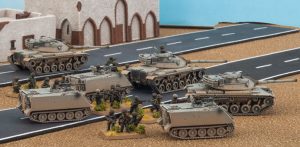
The second infantry formation available to the Iranians is the Basij Infantry Battalion. The Basij (Persian for ‘The Mobilization’) are a paramilitary volunteer militia of civilians between the ages of 18 and 45, though often volunteers much younger or older can be found in its ranks. The IRGC uses the Basij as a pool to draw reinforcements for their units, or to field Basij fighting units under IRGC command. The Basij were often used as the first wave of an offensive and as a consequence suffered disproportionately high casualties, often having these attacks described by the Iraqis are ‘human waves’.
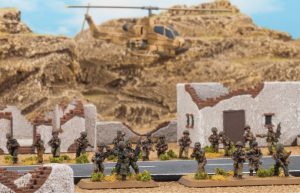
A Basij Infantry Company, at full strength, has 25 AKM assault rifle teams (Range 8”/20cm, ROF 3/3. AT 1, FP 6, and a Pinned ROF 1) and 12 RPG-7 anti-tank teams.
The Anti-tank Jeep Group contains two to six Anti-tank Jeeps, each armed with a 106mm recoilless rifle (Range 24”/60cm, ROF 1/1, AT 17, FP 2+). They use the Scout rule to sneak around, and the 106mm recoilless has Accurate (no +1 long range hit penalty if not moving), Brutal (enemy rerolls Infantry and Unarmoured saves), HEAT (no +1 Armour bonus at long range), Recoilless (cannot be concealed if shot) and Slow Firing (+1 to Hit for Moving ROF) rules.
The Iranian support weapons also reflect the mixed sources of their weapons systems. Reconnaissance units are equipped with British supplied Scorpion light tanks, while Iranian artillery is equipped with US M109 self-propelled howitzers. Rocket artillery, like the Iraqis is made up of BM-21 Hail truck mounted rocket systems, either the original weapons purchased in 1967 or additional Chinese and North Korean copies supplied later. Like the Iraqis, the Iranians used the Soviet ZSU-57-2 and ZSU-23-4 Shilka anti-aircraft SP gun systems.
The Iranian army’s aviation corps was well equipped with US AH-1 Cobra attack helicopters, equipped to the same standard as the American versions.
Iran-Iraq War
Oil War also contains a section on the Iran-Iraq War, giving a history and how to field the forces involved in the war from Oil War.
Soviets
While the tanks facing the western forces in Europe consisted of T-64 and T-72 tanks, the bulk of Soviet armoured forces available for immediate action on the Iranian frontier were equipped with T-62M tanks. The T-62M fitted the T-62 with an improved applique armour package (Front 14, Side 9, Top 2, Bazooka Skirts), a Laser Rangefinder (no To Hit penalty for range over 16”/40cm) and the ability to fire the AT-10 Stabber anti-tank missile (Range 16”/40cm-48”/120cm, ROF 1/-, AT 21, AT 3+, Guided and HEAT).
Oil War allows you to field a T-62M Tank Battalion formations and T-62M Tank Companies in your Soviet force from Red Thunder.
Intervention Forces
Oil War also provides a guide to the forces from other Team Yankee books that could also be used for the battles of World War III in the Middle East.
Scenarios
Finally we have two scenarios themed on the forces inside Oil War. The first one, West of Khorranshahr, pits Iranian attackers against Iraqi defensive forces in a battle across the frontier of the two countries, typical of the encounters of the Iran-Iraq War. The second scenario sees the Syrians attacking the Israelis in the Golan Height at the start of the Syrian offensive against Israel. This pits a strong Syrian Tank forces against a small, but elite, Israeli defensive force.
Packed with Colour
As is usual for a Team Yankee book, it is full of colour photographs of Israeli, Iraqi, and Iranian models, painting guides, and a comprehensive catalogue section to help your work out what packs to get for your Oil War force.
So pack up your desert camo gear, we’re off to the Middle East!
– Wayne

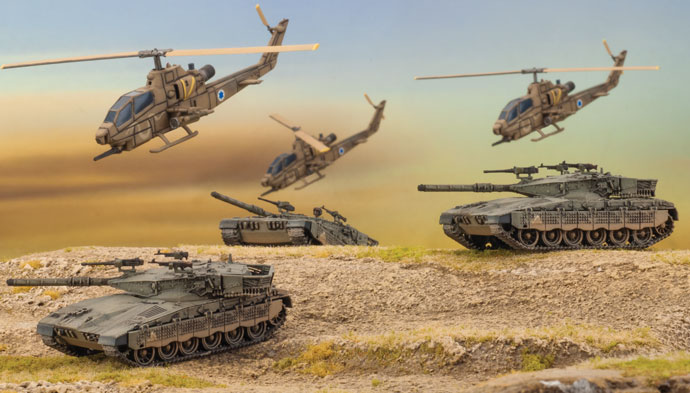
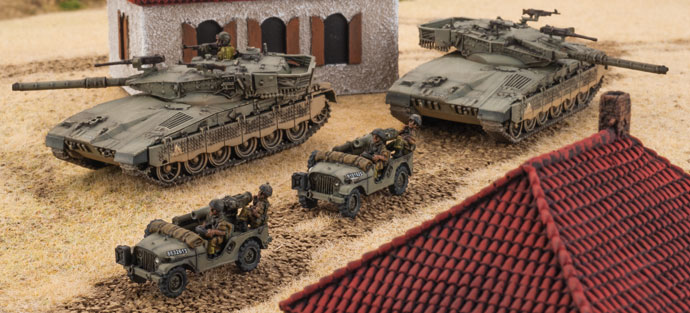
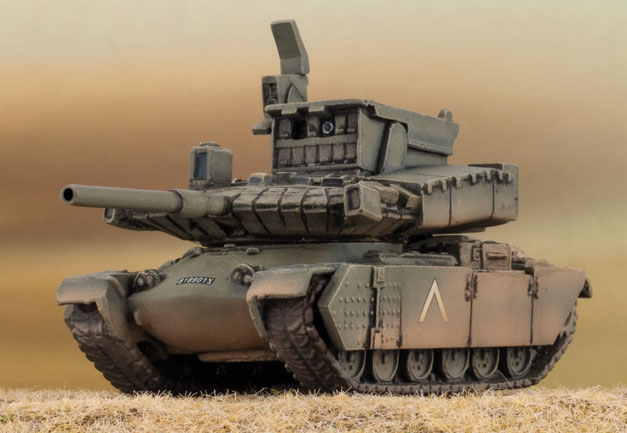
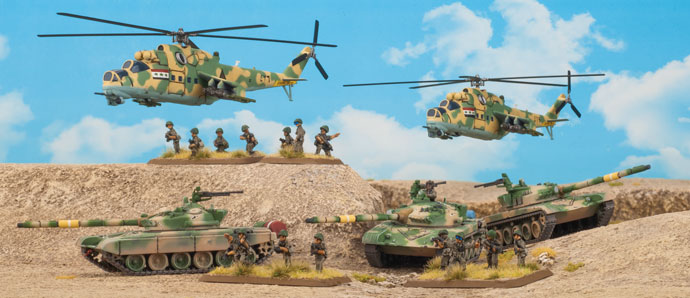
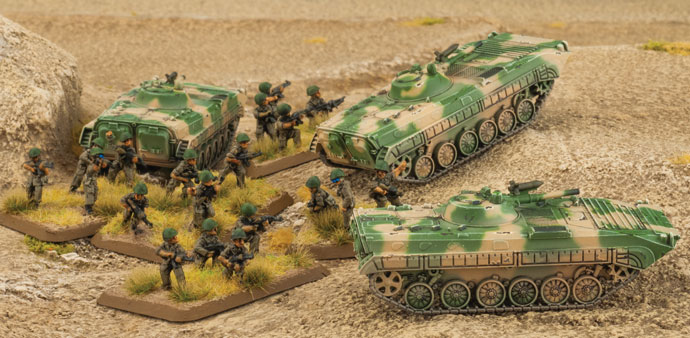
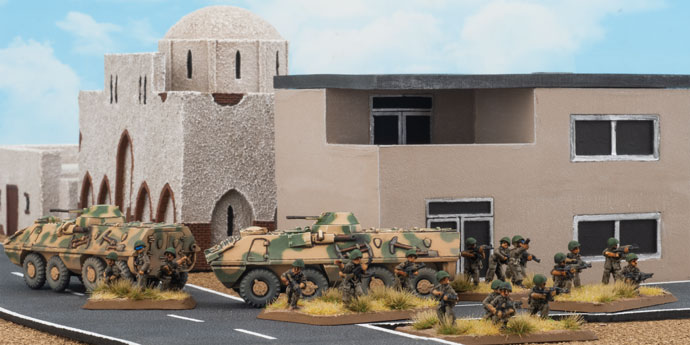
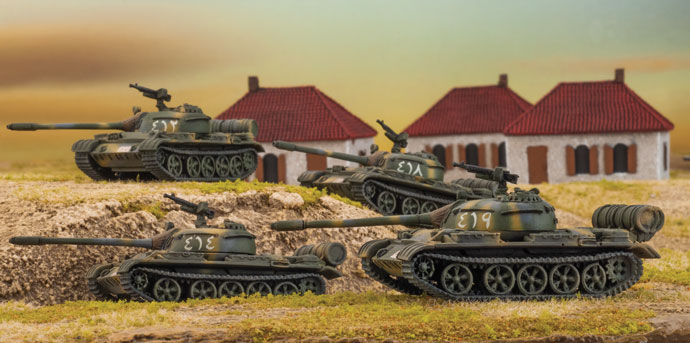

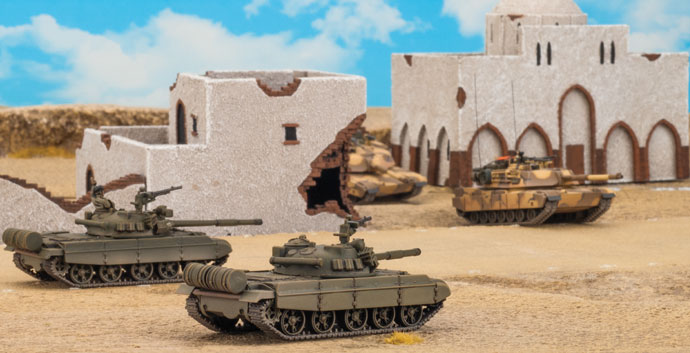
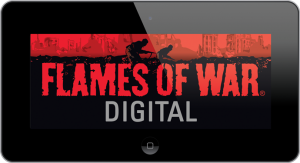
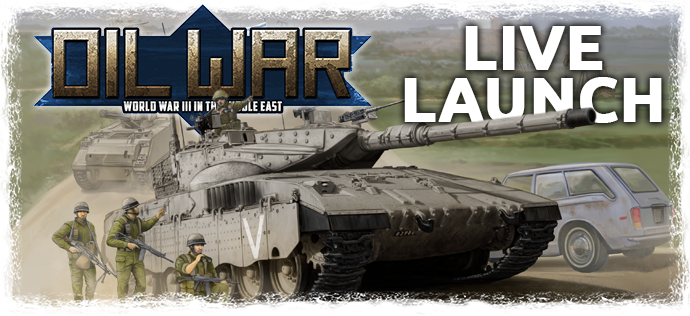
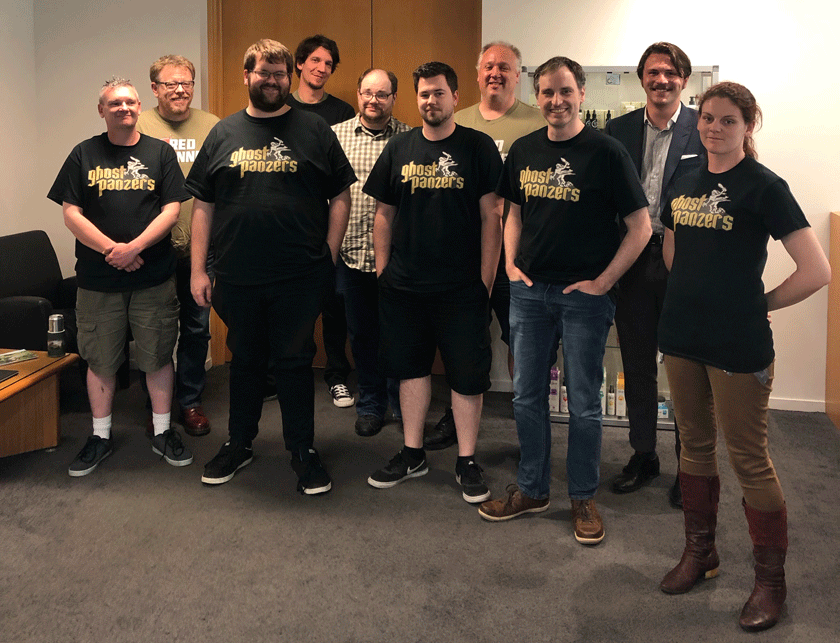

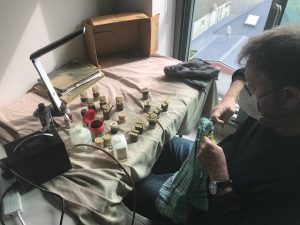
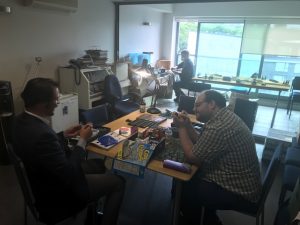
 Our two new Kursk Books are out on Forces, so you can get to work setting up your armies for the Eastern Front!
Our two new Kursk Books are out on Forces, so you can get to work setting up your armies for the Eastern Front!
